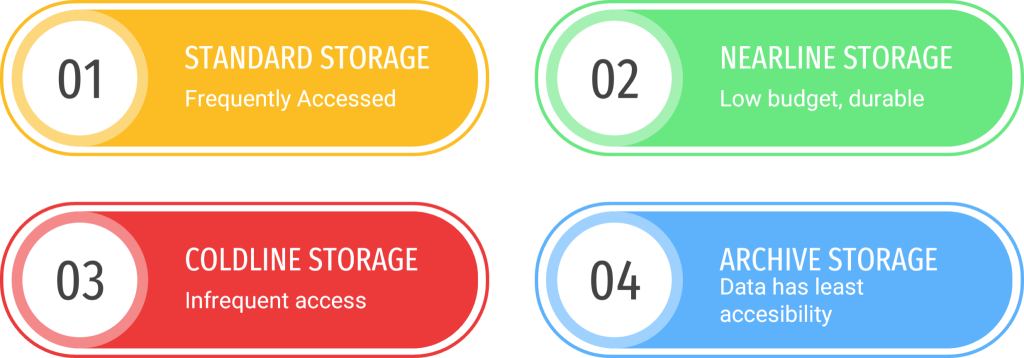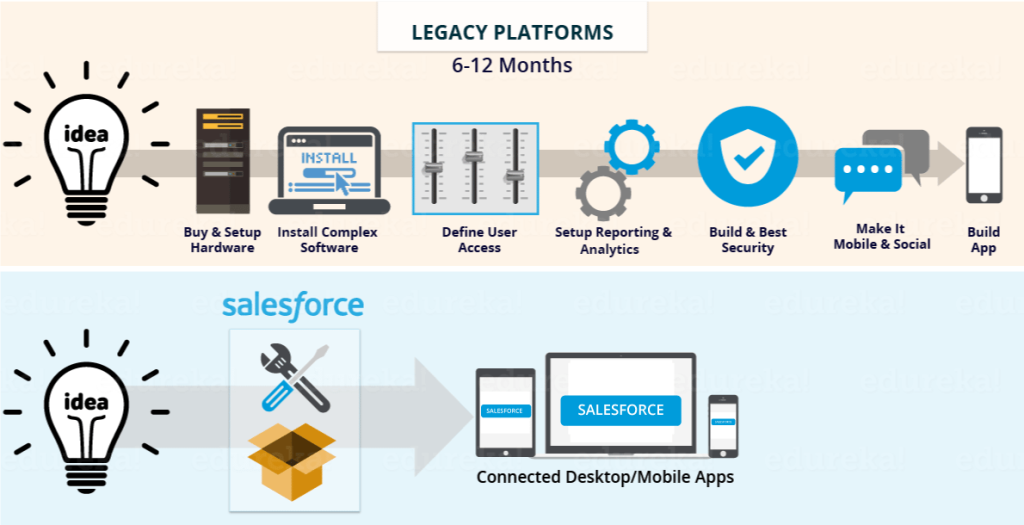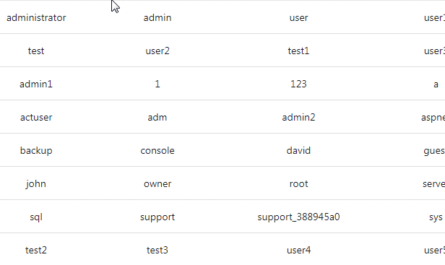Google Cloud Platform is the most user-friendly cloud computing suite available. Google Cloud provides its cloud services for free to its users along with $300 worth of credits valid for a year. When compared to other cloud platform suites GCP has the best pricing structure.
Google Cloud Storage is a highly available storage service provided by Google Cloud Platform which allows users to store data files in the cloud. Though free for its users, there is a pricing structure in place if you exceed your free credit limit. If you have any lingering doubts about what the Google Cloud Storage pricing is based on, this is the blog for you. You can learn more from the GCP certification training.
- Google Cloud Storage Pricing Overview
- Google Cloud Storage Tiers
- Data Storage Pricing
- Network usage and Retrieval Costs
- Google Cloud Storage Quotas and Limits.
- Optimizing Google Cloud Storage costs with Cloud Volumes ONTAP
Google Cloud Storage Pricing Overview
Google Cloud Storage pricing is based on the following components.
Data Storage: The amount of data stored in the cloud storage components corresponds to the operations that you perform with the resources available. Storage rates vary depending on the storage class of your data and the location of where the data is stored.
Data Processing: The process done by Cloud Storage which includes operations charges, any applicable retrieval fees, and inter-region replication.
Network Usage: Network usage is calculated by checking the amount of bandwidth used by the user. Charges may also apply for transferring files from Google Cloud Storage from one location to the other.
Google Cloud Storage Tiers
Cloud Storage costs are largely determined by the storage tier you select for your data. Here are the tiers offered by Google Cloud Storage
- Standard Storage: It is suitable for frequently accessed data and is only kept for limited time periods. When using Standard Storage in a single region it is best to store data used by Compute Engine Instances and Google Kubernetes Engine clusters. When employed in the dual or multi-region mode you still receive maximum performance and better availability
- Nearline Storage: It is a low-budget, durable storage solution for retaining data that is not often accessed. It is the preferred choice over Standard Storage in times of a minimum timeframe of 30 days.
- Coldline Storage: It is a highly durable, low-cost service for storing data is infrequently used It is a superior storage option compared to Standard Storage and Nearline Storage when the minimum timeframe is 90 days.
- Archive Storage: It is Google’s lowest-cost storage service for data archiving, disaster recovery, and online backup. Similar to Coldline and Nearline Storage, Archive storage has moderately low accessibility. Your data is accessible within milliseconds rather than days or hours. Data has to be stored for a minimum time of 365 days for Archive Storage.

| Standard Storage | Nearline Storage | Coldline Storage | Archive Storage |
| $0.026/GB/month | $0.010/GB/month | $0.007/GB/month | $0.004/GB/month |
| No retrieval costs | $0.01/GB for data retrieval | $0.02/GB for data retrieval | $0.05/GB for data retrieval |
Let’s discuss the various cost components that come into factor when deciding the basis of your Cloud Storage usage,
Data Storage Pricing
The cloud storage containers that store your data are known as buckets on Google Cloud. Everything you store on Google Cloud has to be stored in buckets. You can use buckets to organize as well as control access to your data. Data storage costs apply to data that is physically present in the cloud storage and not the data in transit through the network. Data storage rates are calculated according to the storage tier of every object.
| Location | Standard Storage | Nearline Storage | Coldline Storage | Archive Storage |
| Iowa (us-central1) | $0.020 | $0.010 | $0.004 | $0.0012 |
| North Carolina (us-east1) | $0.020 | $0.010 | $0.004 | $0.0012 |
| Northern Virginia(us-east4) | $0.023 | $0.013 | $0.006 | $0.0025 |
| Oregon (us-west1) | $0.020 | $0.010 | $0.004 | $0.0012 |
| Los Angeles (us-west2) | $0.023 | $0.013 | $0.006 | $0.0025 |
| Salt Lake City (us-west3) | $0.023 | $0.013 | $0.006 | $0.0025 |
| Las Vegas (us-west4) | $0.023 | $0.013 | $0.006 | $0.0025 |
| Montreal (northamerica- northeast1) | $0.023 | $0.013 | $0.007 | $0.0025 |
| Toronto (northamerica-northeast-2) | $0.023 | $0.013 | $0.007 | $0.0025 |
| Sao Paulo(southamerica-east1) | $0.035 | $0.020 | $0.007 | $0.0030 |
Data Storage Pricing based on location
Network usage and Retrieval Cost
The first thing we need to know here is what egress is. In simple terms, egress is the process of data leaving a network and transferring to an external location.
Google Cloud Storage charges separately for network usage. There is a set of guidelines for network usage pricing.
- No charge for network egress
- No charge for network egress within the same location in Google Cloud
- $0.01/GB for egress between locations within the same continent.
- $0.08 to $0.12/GB for egress between continents (baring Asia and Australia)
- $0.20 to $0.23/GB for egress to China
- $0.15 to $0.19/GB for egress to Australia
Network egress is considered to be dangerous by organizations because it poses as a potential threat as data integrity might be compromised.
| Standard Storage | Nearline Storage | Coldline Storage | Archive Storage |
| $0/GB | $0.01 | $0.02 | $0.05 |
Retrieval Fees for Storage Classes
Google Cloud Storage Limits and Quotas
Google Cloud Storage has limits placed on various resources and activities. There are limits on buckets (where the data is stored), bandwidth (network usage), API requests (both JSON and XML) and objects.
- Buckets
- There is a limit to the size of 22 bucket names. 63 characters if the name does not contain a dot or 222 characters if the name contains a dot.
- Per project rate limit to each bucket creation and deletion. The rate limit is 1 request every 2 seconds.
- Highly available applications should not depend on bucket creation or deletion in the critical part of their application. Bucket names are part of the global namespace. Any dependency on the bucket would cause a single point of failure for the application.
- Update limit placed on each bucket which is once per second,
- For buckets with Pub/Sub notifications
- 100 total notification configurations.
- 10 notifications
- 10 custom attributes for each notification
- Objects
- The maximum size limit for an individual object to be stored in Google Cloud is 5TiB
- There is a maximum combined size limit for all custom metadata keys and values. The limit is 8 KiB per object.
- The size of the object name is limited to 1024 bytes.
- Write the limit to the same object name.
- No limit to the number of writes across an entire bucket which includes uploading, updating, and deleting objects.
- A limit of 100 ACL’s per object.
- API Requests
- The total request payload should always be less than 10MB and not more than 100 calls for JSON API for batch requests.
- Limit to the combined size of the request URL and HTTPS. The limit is 16 KB for XML API’s.
- A multipart upload can have 10,000 parts.
- The individual upload has a size of 5 GB
- No limit to the number of multipart uploads.
- Bandwidth
- Default bandwidth quota set for each region that has data egress from Cloud Storage to Google Services. Quota is set at 200 Gbps per project.
- There is a per region, per project quota default bandwidth quota set at 50 Gbps for Google Services accessing data from buckets in a given multi-region.
Optimizing Google Cloud Storage Costs with Cloud Volumes ONTAP
The Cloud Volumes ONTAP by NetApp is the leading enterprise-grade storage management solution. It delivers secure, proven storage management services on Google Cloud, AWS, and Azure. Cloud Volumes ONTAP capacity can scale into petabytes and supports various use cases such as file services, databases DevOps, or any other enterprise workload with strong features such as high availability, data protection, storage efficiencies, and Kubernetes integration. These are just some of the various features of Cloud Volumes ONTAP.
ONTAP particularly focuses on thin provisioning, deduplication, and data compression thereby reducing costs by over 70%. Check out these Cloud Volumes ONTAP case studies.
Summary
This blog should have given you a good idea of Google cloud storage pricing. If you still want to learn more, do not worry, the Google Cloud Platform (GCP) Certification Training Course will help you better comprehend the tool. For that, we have videos on YouTube that you can go through for a better hands-on understanding of GCP.


